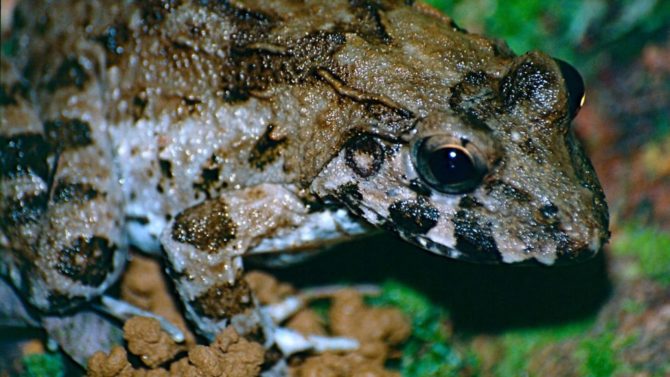French Icon: Frogs’ Legs

Love them or loathe them, cuisses de grenouille have a special place in France’s culinary heritage

Although eaten in many other countries, frogs’ legs have been a staple of French cuisine since medieval times. This dish is so indelibly associated with the French that it has earned them the pejorative nickname ‘frogs’ leg eaters’, later shortened to ‘frogs’, which has been in use since the late 18th century.
The leathery thighs, which can be baked, sautéed, boiled or fried, were first mentioned as being on the menu in France in 12th-century records of the Catholic Church, when canny monks had the flavour-packed cuisses classified as fish and declared them to be an ideal substitute for meat during the Lenten run-up to Easter.
Getting a Leg Up
As was often the case, food that was adopted by the monks rapidly became popular with the masses. By the 17th century, frogs legs were considered a noble delicacy and appeared on the menu en persillade, au beurre or in dozens of other recipes. As prices for batrachians rose, France’s lakes, rivers and swampier regions were soon crawling with frog hunters swiping the air with their nets to catch their gourmet prey. Writer Alexander Dumas in his Grand Dictionnaire de Cuisine even reports the case of one canny Auvergnat who earned a fortune by breeding frogs and then selling them to some of the country’s top restaurants.

These days, with France’s frog population endangered through overfishing, plus countless ethical concerns, there is a stiff fine for anyone caught hunting for their own frogs. Cuisses de grenouille is still an enduringly popular dish on the menus of the country’s restaurant; however, with an annual consumption of around 160 million legs per year, most of France’s supply of Javan giant frogs and Asian brackish frogs now comes from Indonesia. India and Bangladesh were also big suppliers, until a few decades ago when frog exports were banned due to a huge increase in flies and mosquitoes that had hitherto been controlled by the presence of the insect-loving batrachians.
Brits and Frogs’ Legs
Like chicken, only with a vaguely fishy aftertaste, frogs’ legs these days are generally served in a range of spicy sauces. Since they’re high in protein and low in fat and full of omega-3 fatty acids, they make a healthy substitute to most meats, including chicken.
Although historically the British have turned green at the thought of cuisses de grenouille – with even the Larousse Gastronomique saying that they ‘generally filled the British with disgust’ – frogs’ legs were briefly popular in Britain at the beginning of the 20th century, when renowned Gallic chef Auguste Escoffier served up the croaking delicacy at the Savoy hotel during a dinner held in honour of the Prince of Wales. Clever Escoffier knew that the legs would be shunned, so he prepared them in a fragrant herb-flavoured court-bouillon, then served them, swimming in a tasty sauce covered with chicken jelly, under the lyrical name of Les Cuisses de Nymphe à l’Aurore or ‘thighs of the dawn nymphs’, thus cleverly avoiding the title of ‘frogs’ legs’.

More recently, archaeologists working on a site near Stonehenge found the cooked bones of frogs’ legs dating back some 10,000 years ago, prompting scientists to surmise that France’s most iconic dish may well have originated across the Channel – in the very country that invented that froggy nickname.
WHERE TO EAT FROG’S LEGS
Frog restaurants
Fittingly called Rainettes (tree frog), Ombeline Choupin’s bar de grenouilles in the hip Marais district of Paris is the capital’s first venue where you can eat cuisses de grenouille prepared in a dozen different ways.
Other celebrated restaurants in the capital serving the gourmet dish include Chez André and Roger La Grenouille.
Frog festivals
The Vosges region is particularly linked to France’s iconic dish and every April, the thermal town of Vittel celebrates at La Foire aux Grenouilles. Created by chef René Clément, who also founded the Brotherhood of Frogs’ Legs Tasters, you can sup on countless different frog delicacies as you sip the local Chardonnay.
The US, particularly in the south around Louisiana, also loves those chicken-flavoured cuisses. The world’s biggest frogs legs’ festival is held every year at The Fellsmere Frog Festival in Florida.
HOW TO COOK THEM
Cuisses de Grenouille en persillade
Ingredients
10 pairs of frog’s legs (thawed if frozen)
120g butter
220ml flour
310 ml milk
four cloves finely chopped garlic
40 ml dry white wine
one tablespoon chopped parsley
juice of one lemon
Method
Place the legs in a dish with the milk and leave for several hours to marinate and become tender. When the legs are ready, mix salt and pepper with the flour then roll the legs in the flour mix. Shake off the excess and transfer the legs to a clean plate ready for cooking.
Heat the butter in a hot frying pan and add the frog’s legs to brown for several minutes on either side. Add garlic, parsley and juice and cook for a few more minutes. Serve on heated plates.
Liked this article? You might also like…
How many of these ‘weird’ French dishes have you tried? QUIZ
Share to: Facebook Twitter LinkedIn Email
More in french icon


